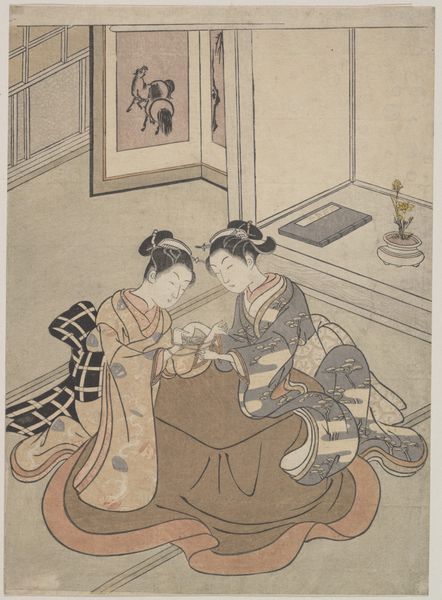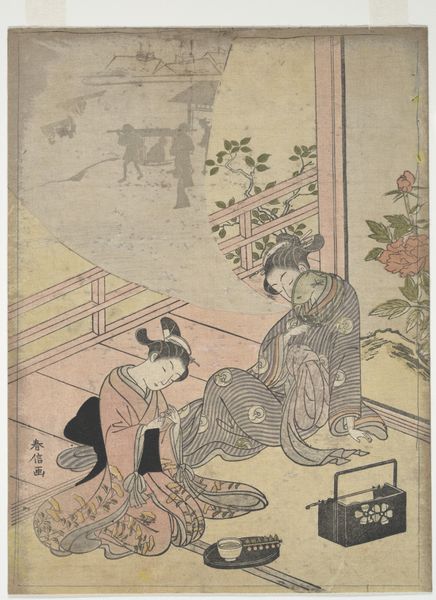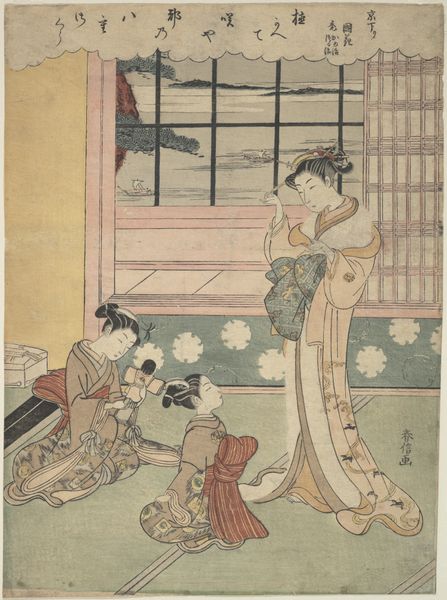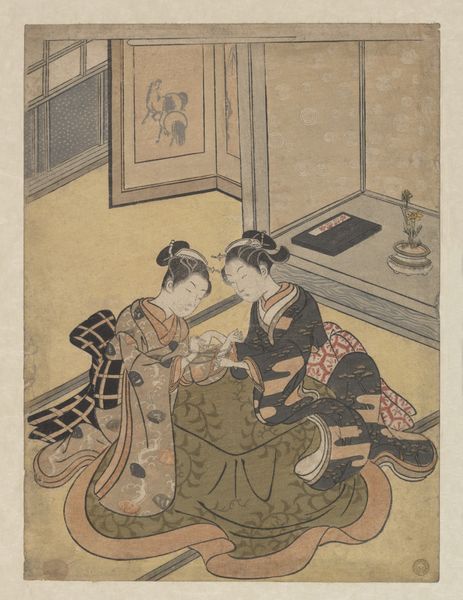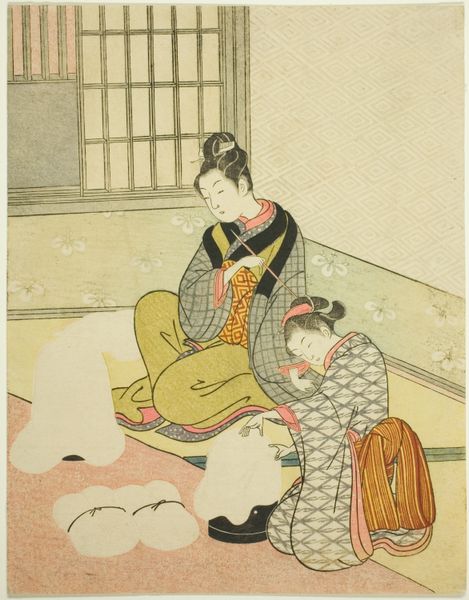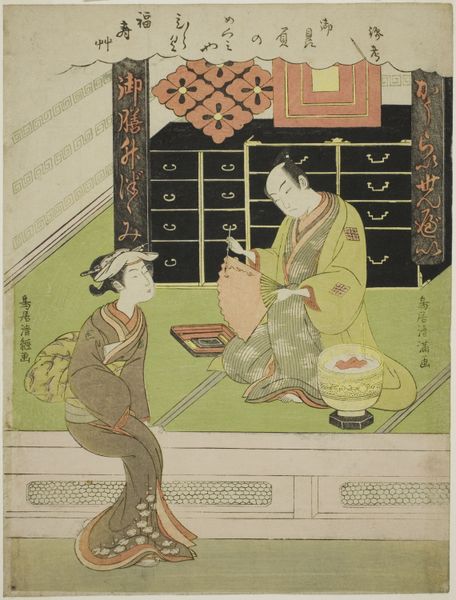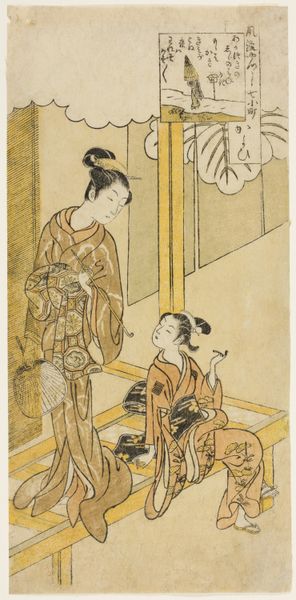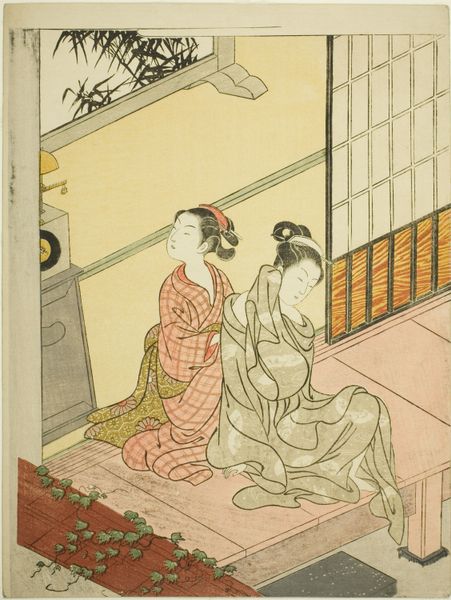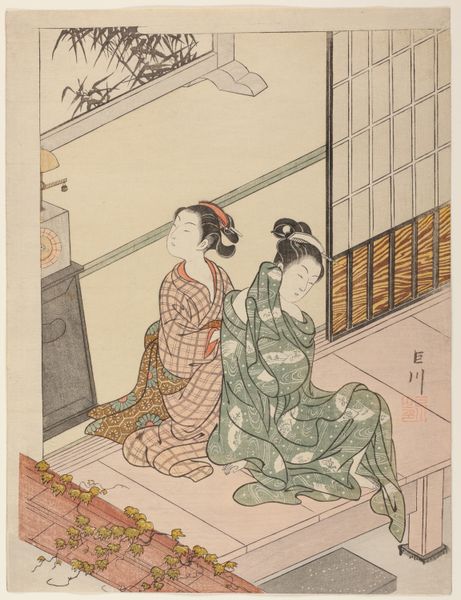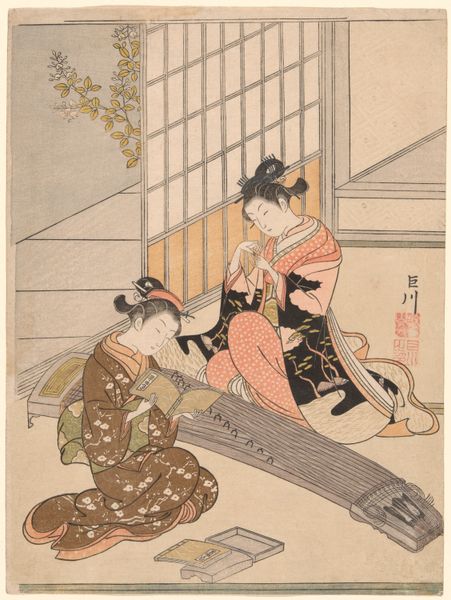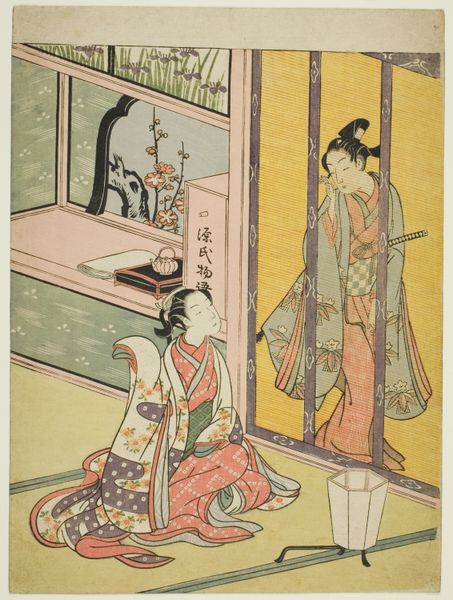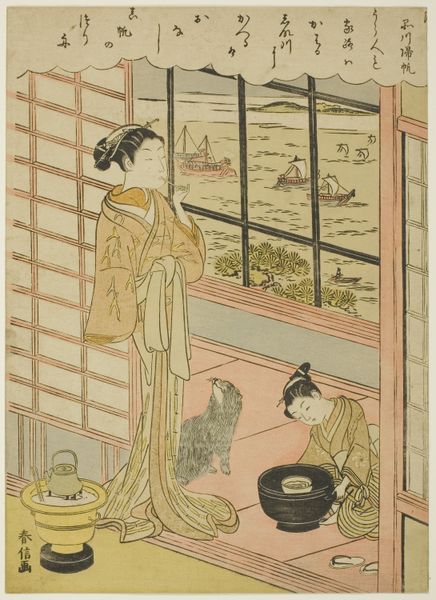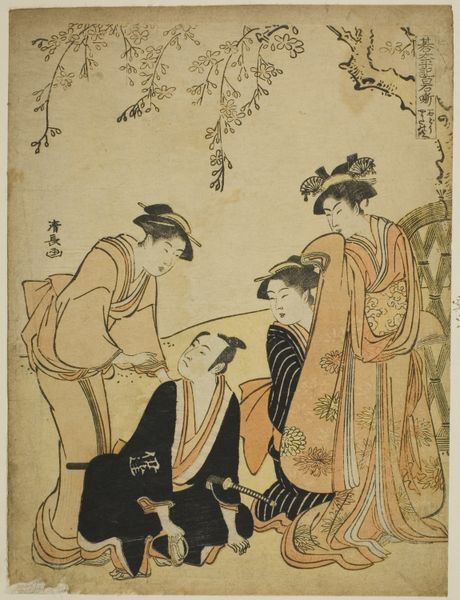
Young Women Playing Cat's Cradle c. 1767 - 1768
0:00
0:00
print, woodblock-print
# print
#
asian-art
#
ukiyo-e
#
japan
#
figuration
#
historical fashion
#
woodblock-print
#
genre-painting
Dimensions: 28.7 × 21.4 cm (11 3/8 × 8 3/8 in.)
Copyright: Public Domain
Editor: Here we have Suzuki Harunobu’s "Young Women Playing Cat's Cradle," made around 1767 or 1768. It's a woodblock print, and I’m really struck by how delicate the lines are and the subtle color palette. What jumps out at you in this piece? Curator: I immediately focus on the woodblock print itself, a relatively accessible medium. This challenges conventional distinctions between craft and fine art, emphasizing the material processes inherent in ukiyo-e. Note how Harunobu, within those limitations, cleverly depicts class markers, like their elaborate kimonos. The print serves as a commodity circulating within a specific economic system. How does this repetitive gesture of playing contribute? Editor: I see what you mean! They look poised, almost doll-like. It makes me wonder about how much agency these women really had in shaping their own lives and portraying their own personas through their garments and presentation. They're performing something, and maybe the cat's cradle is part of that. Curator: Precisely. The print flattens female agency while paradoxically revealing the intricate labor and craftsmanship involved in creating an "idealized" image for consumption, literally. The clothes, their posture, are commodities as much as the print itself is. This reading, while focusing on material and production, avoids glorifying the image as just 'art.' Don’t you think? Editor: Absolutely. Viewing it through a material lens, as something produced and consumed, opens up new avenues of understanding beyond just aesthetic appreciation. I hadn’t considered it that way initially. Curator: It pushes us to look beyond surface beauty and consider the societal mechanisms that allowed this piece to be made and circulated in the first place. We also could examine other ukiyo-e artists, analyzing which socioeconomic background they catered their pieces towards to learn how each varied, both thematically and material wise. Editor: This has definitely changed how I'll look at prints moving forward. Focusing on the labor and materials unveils hidden layers of meaning. Thanks for this shift in perspective.
Comments
No comments
Be the first to comment and join the conversation on the ultimate creative platform.
